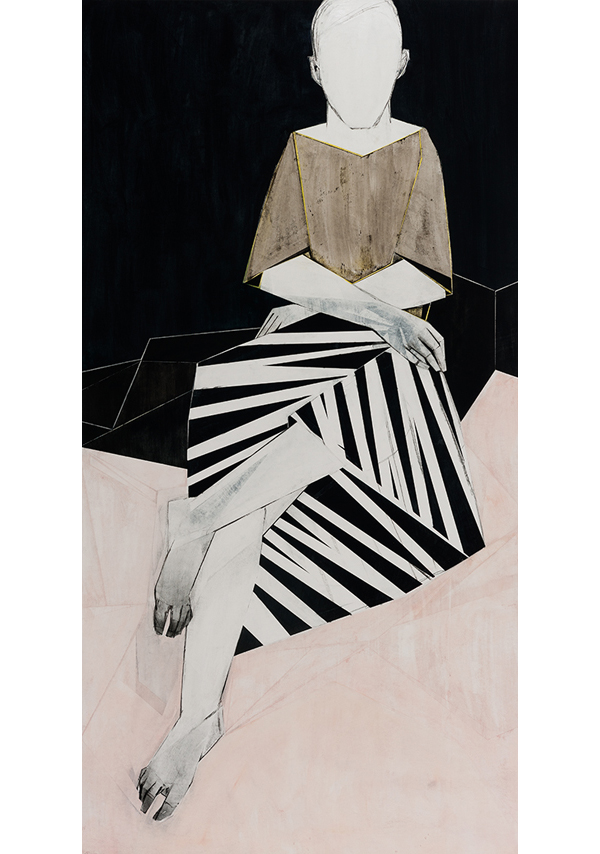Schomaker has a unique brand of figuration: one which is heavily bound to abstraction in its use of bold, graphic forms and composite anthropomorphism.
Made over a six month period in early 2020, Iris Schomaker’s I See The Dawn builds on the artist’s exploration of the relation between figuration and abstraction. Schomaker’s pseudo-silhouetted, monochrome forms are often found caught in private moments of introspection, which, in the context of social distancing and quarantining, is rendered particularly potent.
Schomaker has a unique brand of figuration: one which is heavily bound to abstraction in its use of bold, graphic forms and composite anthropomorphism. Taking between six months and a year to create, each work is built slowly and carefully; first with charcoal, then multiple, thin washes of paint. Each work by Schomaker presents a complex surface, testifying to her diverse working methods: a heavy surface that oscillates between unworked and heavily worked, revealing traces of pencil marks behind the strong, graphic outlines.
Schomaker’s palette is restrained, with little divergence between black, white, grey tones and subtle pastel tones. The softness of her palette gives her work a drawing-like quality, which is emphasised further by pencil marks and other left-over traces of the working process. Devoid of colour, Schomaker’s layered surfaces are at once fragile and deeply evocative. In I See The Dawn, shades of delicate rose and yellow – buff and ochre – cut through the otherwise monochromatic palette to instil an undertone of optimism.
I See The Dawn probes the limits between gesture and geometry, expression and exactitude. Poised at the tipping point between realism and abstraction, I See The Dawn is characteristically layered, and emotionally powerful. Set in an interior atmosphere of solitude and absence, the central figure is neither male nor female, but crosses both legs and arms in a gesture of further isolation. Although the faceless figure invites the viewer to construct their own narrative, we might read it as a meditation on the nature of separation and the interiority and insularity of life in 2020
(By Thea Gregory)
